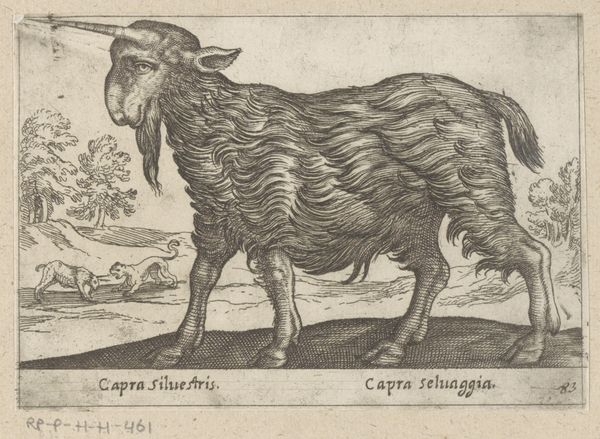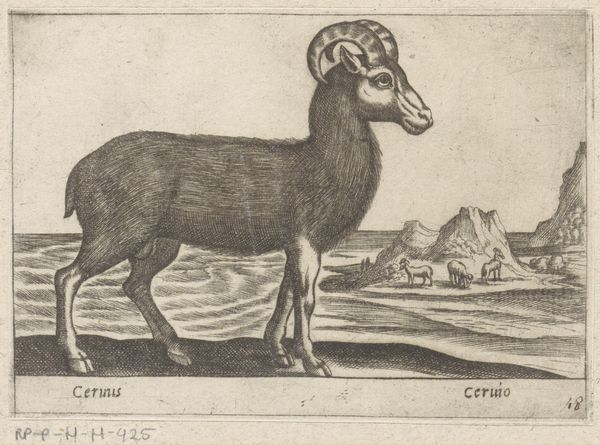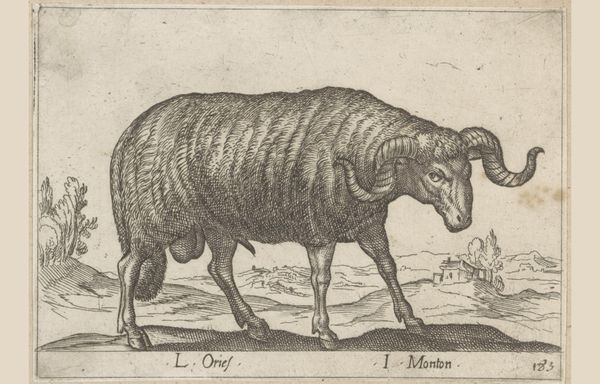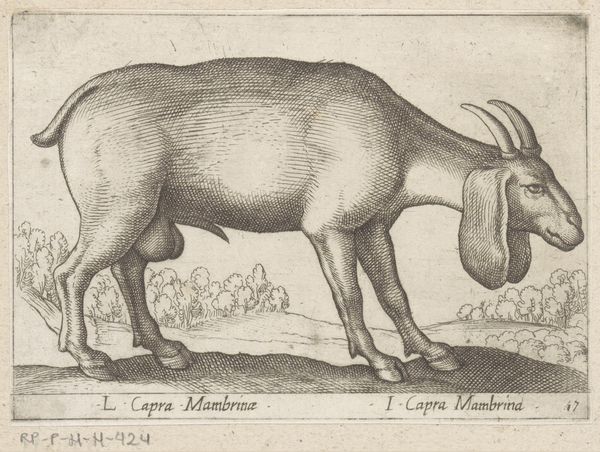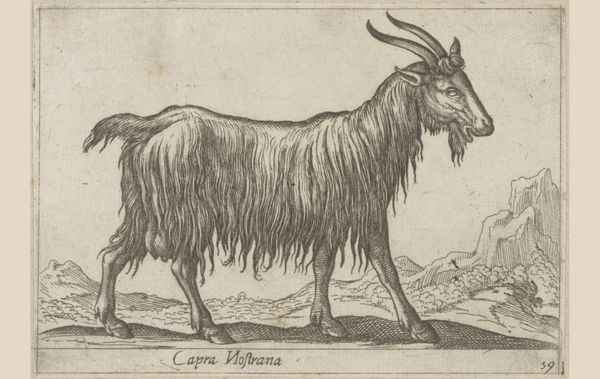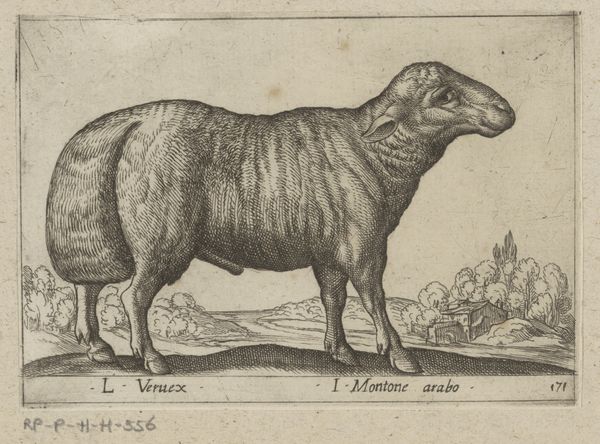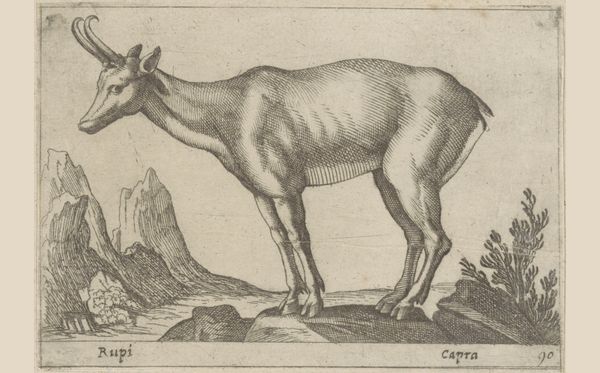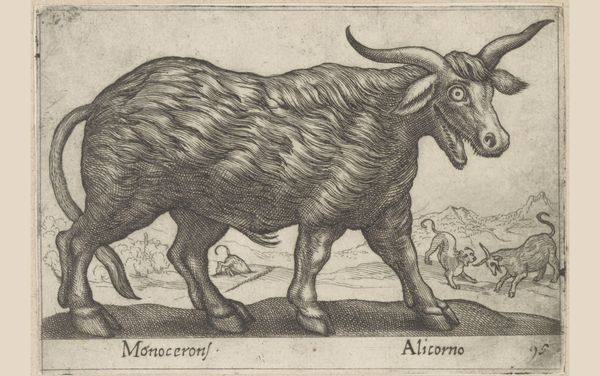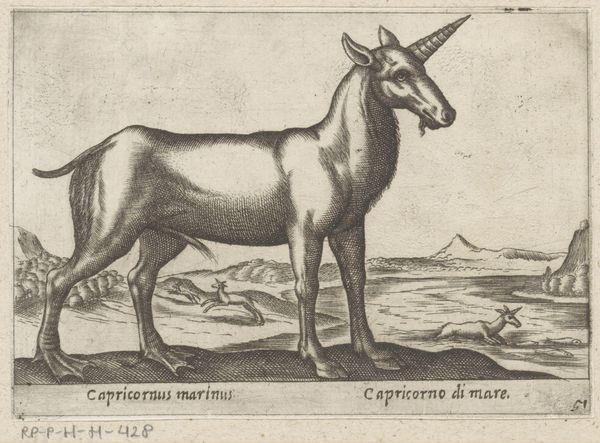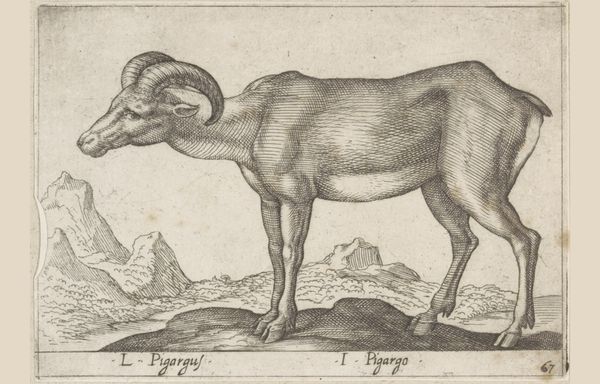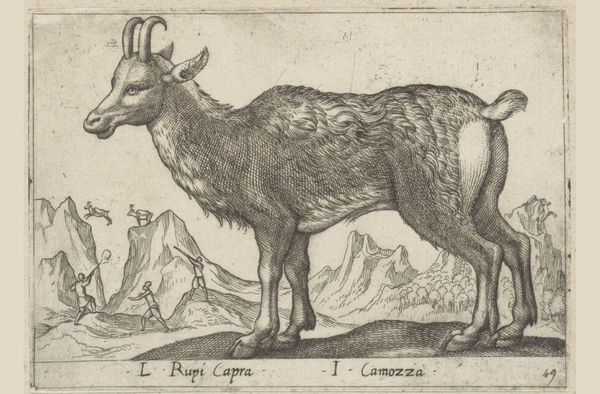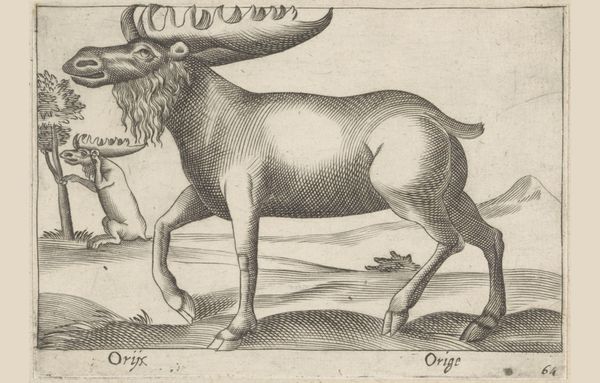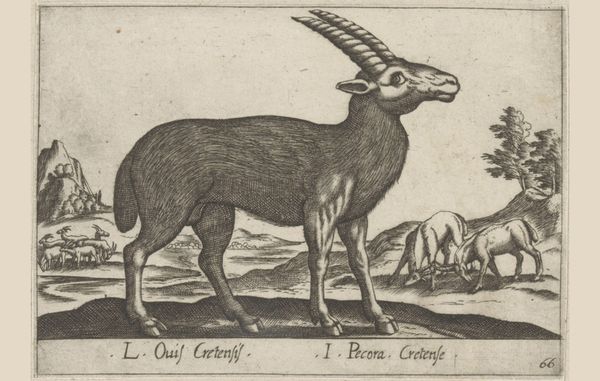
print, etching, engraving
#
baroque
#
animal
# print
#
etching
#
engraving
Dimensions: height 95 mm, width 137 mm
Copyright: Rijks Museum: Open Domain
Curator: Looking at "Mambrina geit" created before 1650 by Antonio Tempesta, one is immediately struck by the contrast in texture—the animal’s dense, wiry hair against the delicate background landscape. It's an engraving and etching, currently held in the Rijksmuseum. What are your initial impressions? Editor: The composition feels a little bit archaic, doesn't it? The way the animal is positioned almost heraldic, in profile, commanding the foreground. This is so redolent of older power structures when certain animals—particularly those prized for meat or labour—conveyed authority. I find it subtly oppressive in its clarity and assertion. Curator: Well, certainly depictions of animals can communicate power, control over nature. But in this image, the very specific breed, "Capra mambrina", implies a valued status perhaps more in relation to agriculture, even luxury. It seems relevant here to understand how control of resources defines hierarchies of class and power. The details are fascinating – observe the way the artist renders the textures. Editor: Absolutely. The engraving masterfully renders texture; each etched line gives the coat weight, dimension. You sense the almost brutal labor involved. And let's consider that breed designation! This animal is valuable as a resource within agricultural society and also serves a more decorative and heraldic purpose. But whose resources are we really talking about here, and what is concealed in the margins about exploitation of human labour? Curator: And does the background also communicate subtle hierarchies? The distant hills populated with what appear to be human dwellings recede from our protagonist, reminding us perhaps that it presides over cultivated, settled space, itself emblematic of land usage rights? Editor: The image may be suggesting ownership. Yet, equally possible, a celebration of human achievement and taming of the landscape…a vision perhaps shared by those very hands cultivating those distant hills, perhaps also hoping that hard work would grant rights and status as this impressive Mambrina geit? A tension seems inherent. Curator: Precisely. It encourages that kind of layered reading – not just about ownership or triumph, but about the complexities and ambiguities of life lived under early modern societal norms. This reminds me how representations like these played roles within visual discourse, mirroring prevailing values and maybe, gently challenging them too. Editor: And the symbolic weight behind this breed! The Mambrina is an image passed down and made iconic; yet now we question, from whose perspective has its symbolic status been forged. What remains hidden about labor, animal treatment and class difference from an artwork seemingly about surface admiration? Curator: I agree entirely. It speaks volumes, doesn't it? This Mambrina might just become the catalyst for broader discussion about animal symbolism within human cultures as it reflects our complicated relationship with the natural world. Editor: That's the lasting appeal – not just the artistry or symbolism in isolation, but rather opening those doors into ongoing and urgently needed conversations.
Comments
No comments
Be the first to comment and join the conversation on the ultimate creative platform.
